 Nintendo 64 over S-video
Nintendo 64 over S-video
Introduction
From the 1980s to early 2000s, most home entertainment devices used composite video signals and connectors. The Nintendo 64 game console followed this mainstream standard, and it came with a composite video cable by default. Unfortunately, composite video has the second-worst video quality out of all available standards, being only a step above RF modulation. Composite video suffered from dot crawl, low luminance resolution, and color bleeding.
S-video is a small but appreciable step above composite video. This standard separates the luminance and chrominance signals into their own wires, resulting in no dot crawl artifacts, better luminance resolution, and less color bleeding. (It still retains the 480i resolution of standard NTSC television however; component video is even better because it separates the two chrominance channels and allows higher resolutions like 1080p.)
I bought my N64 machine around the year and used the composite video cable unquestioningly, until a conversation in with a friend led me to do a bit of research about higher quality output options. With suitable modding (of wires and possibly extra chips), the N64 can output RGB video data, either taken before or after the onboard digital-to-analog converter. Without modding though, it seems the best output format from the N64 is just S-video. I decided to give this a try, and easily bought a 10-CAD cable that plugged into the Nintendo’s proprietary “multi out” port on one end and the S-video socket of my TV on the other end. The resulting improvement in picture quality was decent and within my expectations. I do regret not knowing about and buying this cheap cable earlier, which would’ve given me more years to enjoy better visuals when playing my N64 games.
Picture comparisons
Summary
My overall observations on how Nintendo 64 games look on S-video compared to composite video:
More horizontal resolution and fine detail, less blurring/
halos/ ringing Sharper text, especially noticeable at smaller font sizes; this is the biggest benefit when using S-video
Horizontal pixelation more noticeable because most games choose to render at 320×240 whereas the NTSC format is capable of representing about 720×480; this is not S-video’s fault, and newer consoles like the Nintendo GameCube generally render at the full resolution
Diagonal lines noticeably more jagged; this is a minus point but just highlights existing flaws with the N64’s graphics
Dithering visible in some gradients; it seems the N64 uses 15-bit-color somewhere in its rendering data path; this is not S-video’s fault because analog video by definition does not quantize colors
Interactive comparison
Table of examples
| Game title | Scene | Composite video | S-video | Observations |
|---|---|---|---|---|
| Cruis’n USA | Map menu |  |
 |
|
| Cruis’n USA | United States road map |  |
 |
|
| Cruis’n USA | Choose car |  |
 |
|
| Cruis’n USA | Transmission select |  |
 |
|
| Cruis’n USA | Race with HUD |  |
 |
|
| Cruis’n USA | Race sans HUD |  |
 |
|
| GoldenEye 007 | Select file |  |
 |
|
| GoldenEye 007 | Mission briefing |  |
 |
|
| GoldenEye 007 | Control style |  |
 |
|
| Kirby 64: The Crystal Shards | Title | 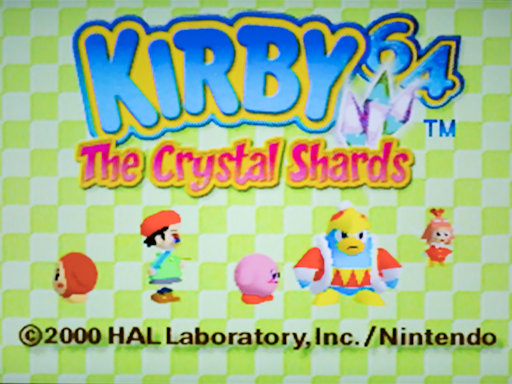 |
 |
|
| Kirby 64: The Crystal Shards | Level select |  |
 |
|
| Kirby 64: The Crystal Shards | Stage |  |
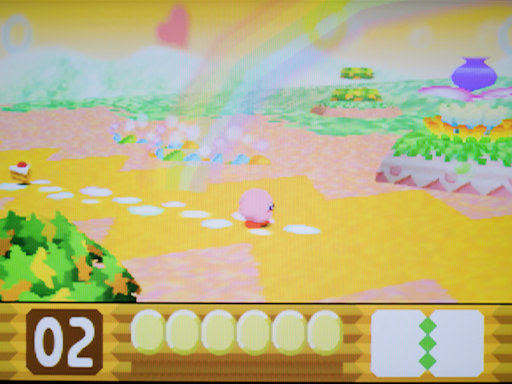 |
|
| Kirby 64: The Crystal Shards | Enemy info | 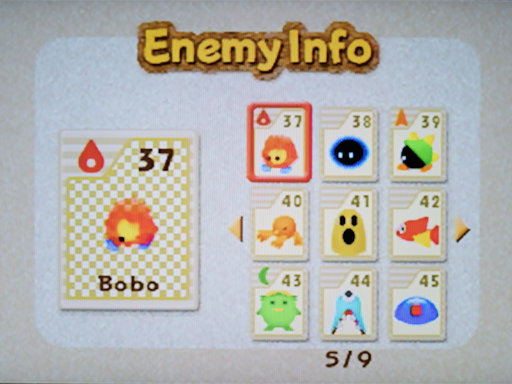 |
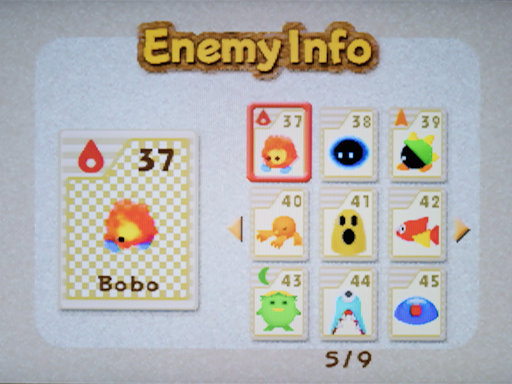 |
|
| Mario Kart 64 | Title |  |
 |
|
| Mario Kart 64 | Map select |  |
 |
|
| Mario Kart 64 | Race |  |
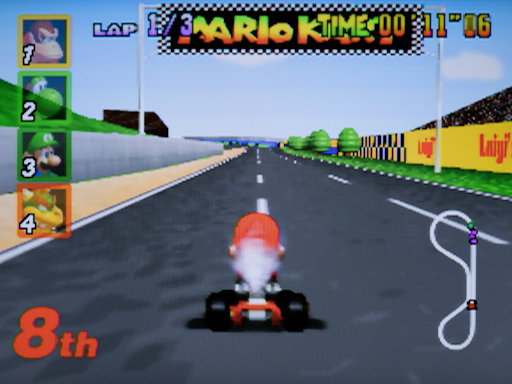 |
|
| Mario Kart 64 | Award |  |
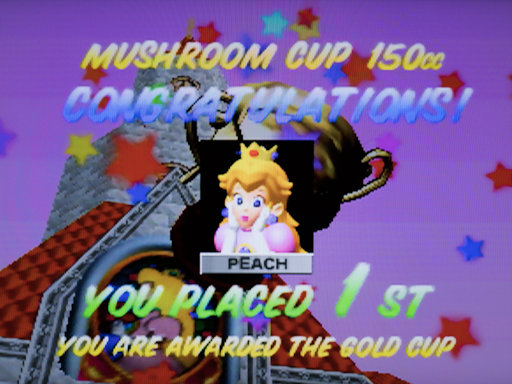 |
|
| Pokémon Puzzle League | Title |  |
 |
|
| Pokémon Puzzle League | Puzzle Village |  |
 |
|
| Pokémon Puzzle League | 3D mode | 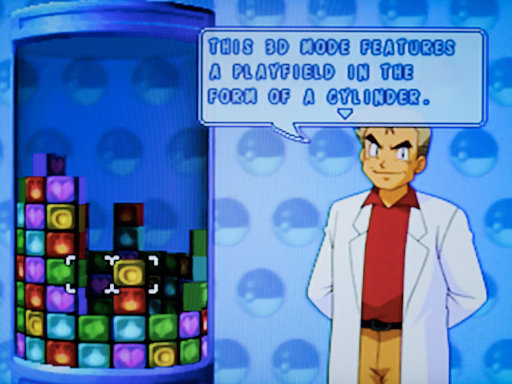 |
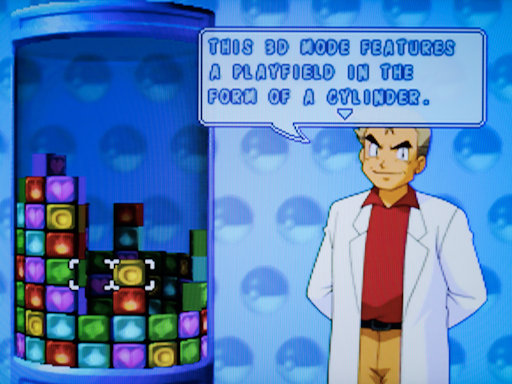 |
|
| Pokémon Puzzle League | Options |  |
 |
|
| Pokémon Stadium | Title | 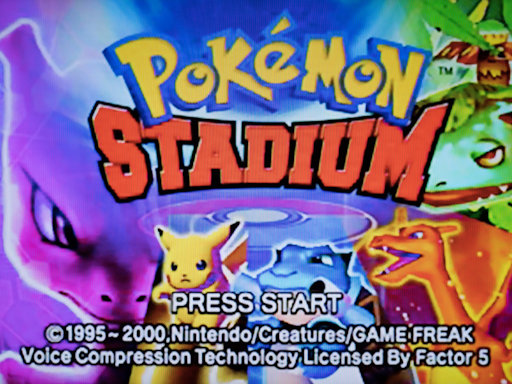 |
 |
|
| Pokémon Stadium | Game Pak check |  |
 |
|
| Pokémon Stadium | Main menu |  |
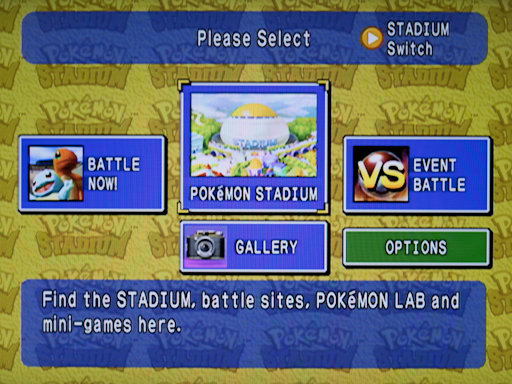 |
|
| Pokémon Stadium | Submenu |  |
 |
|
| Pokémon Stadium | Stadium menu | 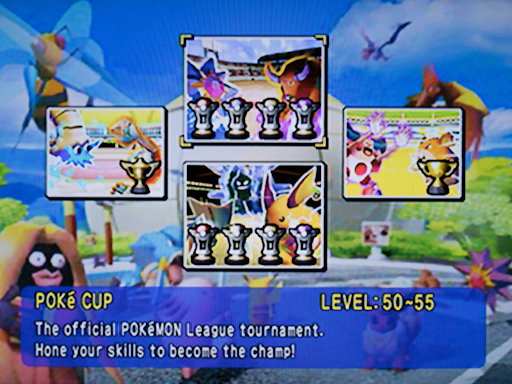 |
 |
|
| Pokémon Stadium | Stadium rules | 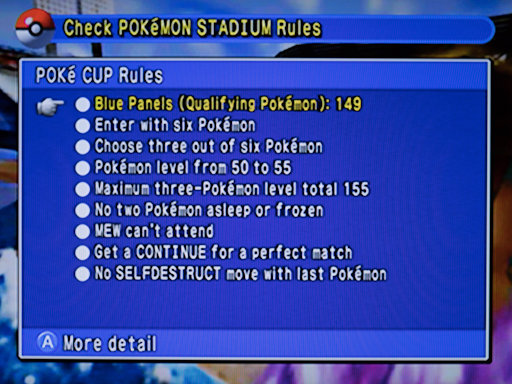 |
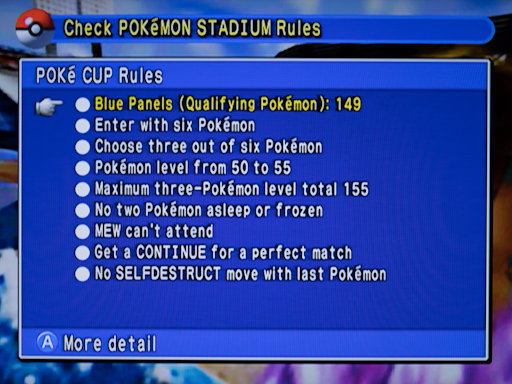 |
|
| Pokémon Stadium | Qualifying Pokémon |  |
 |
|
| Pokémon Stadium | Examine registered Pokémon | 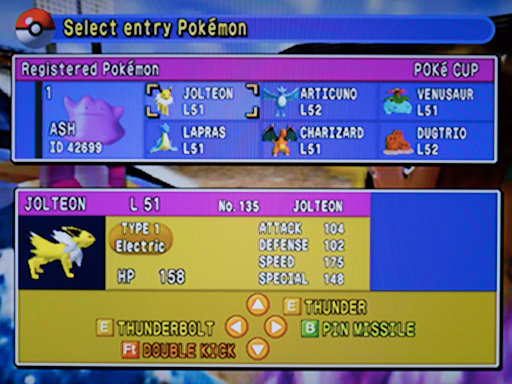 |
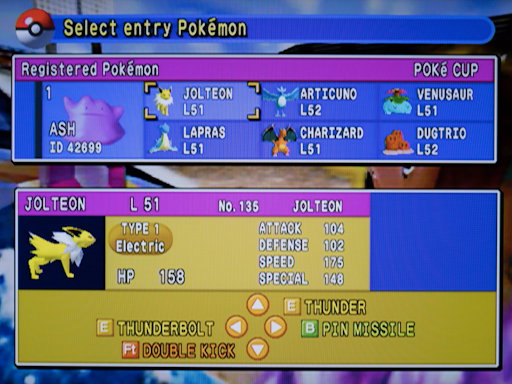 |
|
| Pokémon Stadium | Gym Leader Castle |  |
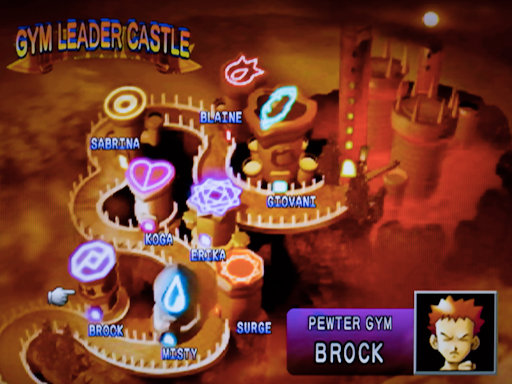 |
|
| Pokémon Stadium | Kids Club menu | 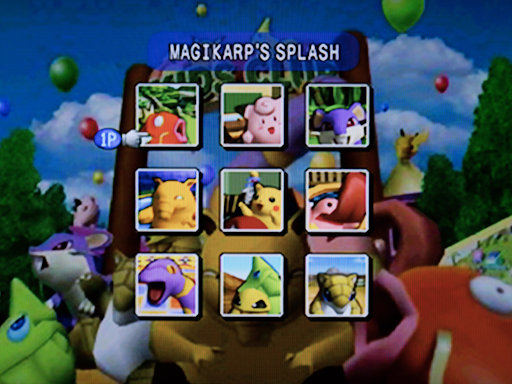 |
 |
|
| Super Smash Bros. | Title |  |
 |
|
| Super Smash Bros. | Player select |  |
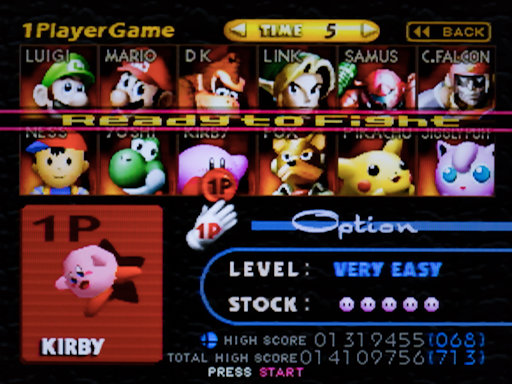 |
|
| Super Smash Bros. | Stage clear |  |
 |
|
Methodology
The fairest comparison would involve hooking up the device under test to a dedicated video capture device. Because I don’t have a capture device and this article isn’t important enough, I took a lazier approach of just manually photographing a TV screen. Arguably this has a slight benefit of illustrating what sort of picture quality you can expect to see a real TV, but a major pitfall is that that the TV’s RGB grid can interact with the camera’s RGB grid to produce terrible moiré patterns.
After some trial and error, I locked down all the picture tuning settings on the TV (especially disabling dynamic contrast and backlighting) and the shot settings on the digital camera (especially exposure and white balance). I didn’t lock the focus on the camera because I was worried about potential focus breathing from temperature changes. In retrospect, refocusing on every photo was a mistake because the captured images seem to have inconsistent intensities of moiré patterns, making comparisons somewhat harder.
I noticed several flaws with my old, not-top-of-the-line LCD HDTV set. The deinterlacer had random occasional juddering artifacts and what seems to be frame reordering. Delivering the same picture over composite video versus S-video resulted in slightly different horizontal and vertical positioning. And it seems the image on composite video was slightly darker, as well has having tiny hue/
Because I couldn’t capture gameplay footage from composite video and S-video at the same time, I had to resort to choosing scenes that were mostly reproducible, and then I manually invoked each scene twice. Because many scenes have dynamic elements (flashing, translation, rotation, etc.), the photos of composite vs. S-video don’t have perfect correspondence of every object.
More info
- Mr. Glitch’s Retro Reviews: HOWTO: Add S-Video Output To A Sega Genesis (see bottom pictures)
- Tim Worthington: N64RGB - Nintendo 64 RGB video board
- YouTube: My Life in Gaming - RGB Video & XRGB-Mini Framemeister :: RGB101
- YouTube: My Life in Gaming - Nintendo 64 :: RGB205
- YouTube: My Life in Gaming - Nintendo 64 Anti-Aliasing Hack :: RGB304 (touches on dithering)
- YouTube: Svenny McG - Nintendo 64 S-Video vs Composite Comparison
- National Instruments: Composite and Component Video Signals
- Maxim Integrated: Get A Grip On Clamps, Bias and AC-Coupled Video Signals